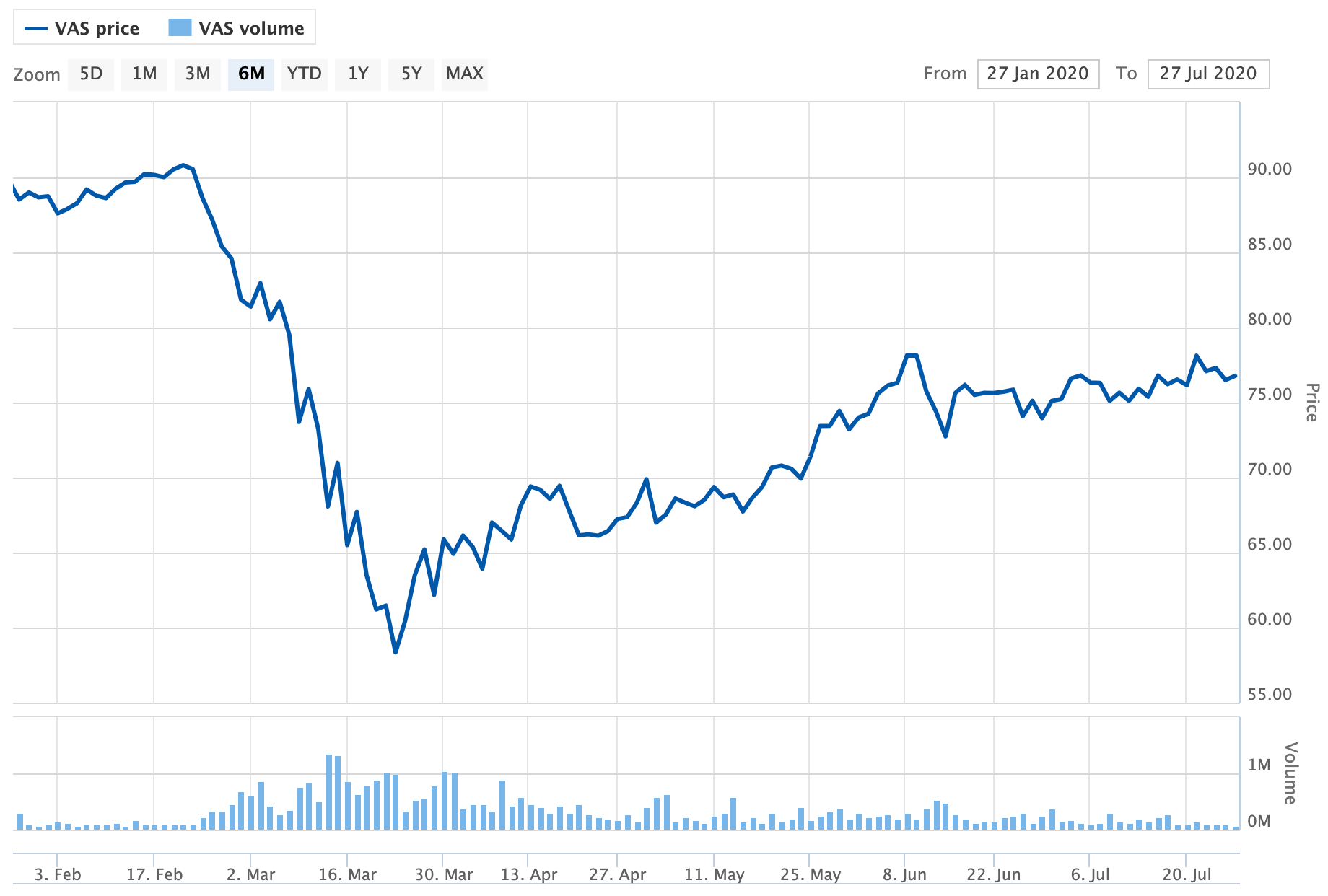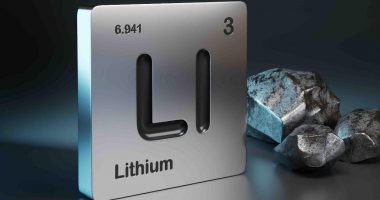- Investing in Vanguard Australia (VAS) is an easy way to split money across a diverse portfolio, but uncertainty clouds the fund while the COVID-19 pandemic continues to spread
- Vanguard is Australia’s largest Exchange Traded Fund (ETF), meaning buying shares in Vanguard actually exposes you to a basket of other companies
- Vanguard holds shares in companies like Commonwealth Bank, BHP, and CSL
- This means Vanguard’s share price is far more dependant on wider market movements than an ordinary company
- As such, an investment in Vanguard is seen as a long-term, passive investment rather than a way to make quick cash
- Moreover, this means Vanguard’s share price is at the more at mercy of COVID-19 than many other potential investments on the ASX
Investing in Vanguard Australia (VAS) is an easy way to split money across a diverse portfolio, but uncertainty clouds the fund while the COVID-19 pandemic continues to spread.
Vanguard is Australia’s largest Exchange Traded Fund (ETF), meaning buying shares in Vanguard works a little differently to trading ordinary shares on the ASX.
Essentially, an ETF works by giving investors access to a “basket” of shares. The fund itself holds shares in several prominent or promising entities which it pools together. Then, then an investor buys into the ETF, they are actually buying a portion of the basket.
For Vanguard, for example, investors can be exposed to ASX 300 stocks across a variety of sectors, including Commonwealth Bank, iron ore giant BHP, and biotech big-cap CSL.
Unlike other managed investment funds like mutual funds, ETFs are traded on a stock exchange like an ordinary listed company would be.
Where is VAS headed?
Given the nature of an ETF, a share price like Vanguard’s is different from other stocks.
The company’s share price is not determined by its own operational performance like profits, costs, and dividends, but rather the performance of the shares in its fund.
As such, the VAS share price is far more dependant on movements among the wider market than it is on individual sectors or companies.
Looking at the VAS share price graph over the last six months, we have a spitting image of the ASX 200 index graph, but just in dollar terms rather than points.

Source: ASX
This means the future of the VAS share price depends on the future of the ASX. If the worst of the COVID-19 damages have been done, Vanguard will follow the ASX in its recovery.
If, on the other hand, we are in for another impending crash, holders of Vanguard funds will be in for another battering.
What does this mean for investors?
Generally speaking, buying ETFs is seen as a less-risky investment than buying company shares.
This is because the ETF naturally hedges itself against sector declines; due to the diverse portfolio to which investors are exposed from an ETF, if one company crashes, the rest of the fund can offset the losses.
On the inverse, it means investors can’t take advantage of the upside of COVID-19 volatility and cash in off of massive share price surges.
For this reason, Vanguard Australia is seen more as a passive, long-term investment as opposed to an attractive bet for investors wanting to play the stock market.
As for where Vanguard’s market price and net present value is headed in the future, the only certainty is that nothing is certain. While COVID-19 is still wreaking havoc on lives and economies across the globe, markets are at the mercy of the virus.








